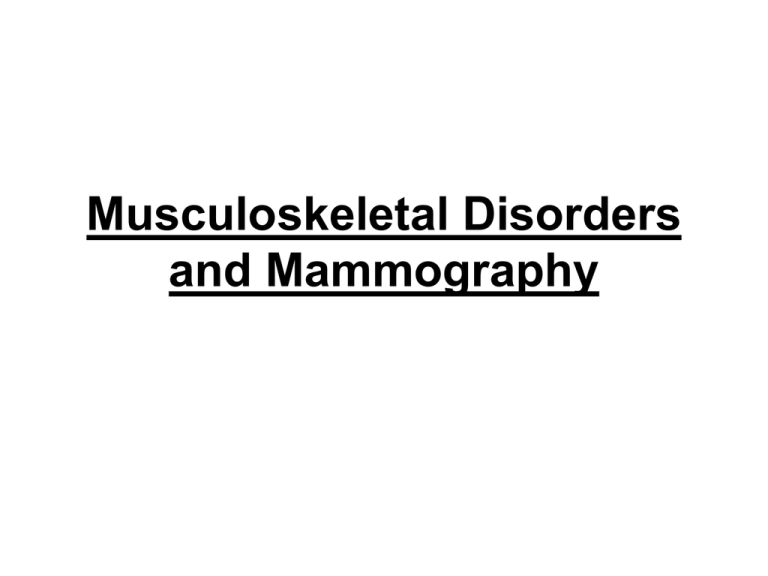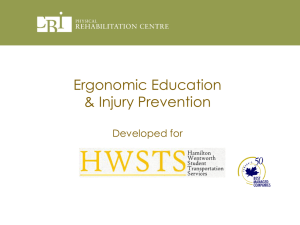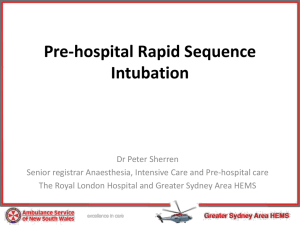mammography2014 - Nightingale Centre Training
advertisement

Musculoskeletal Disorders and Mammography Mammography • There is limited research regarding the musculoskeletal problems experienced by mammographers. Hearn and Reeves in 2003 Aimed to establish: 1)Whether mammographers are prone to RSI 2)What factors cause RSI 3)The proportion of mammographers in Britain suffering from RSI 4) Ways of reducing RSI Risk Factors • Prolonged positioning (e.g. neck extension) • Less experienced staff • Repeated tasks • Repetitive force • Intensity of workload (Hearn and Reeves, 2003) Mammography • Lavell and Burkitt, 2008 • Poster presentation: The seated mammographer: a radical improvement in ergonomics • Sommerich et al, 2010 • Participatory Ergonomics Applied to Mammographers' Work What can you do to reduce the risk? • Try to take regular mini breaks • Regularly stretch muscles and joints which commonly get tight • Technique • Be aware of your posture as much as possible • Seek early treatment if symptoms do not settle • Maintain a healthy lifestyle Muscles and joints which commonly get tight or weak • Short and tight upper cervical extensors /Long and weak deep neck flexors. This encourages forces to got through the lower cervical spine and can contribute to wear and tear, and nerve root problems. Muscles and joints which commonly get tight or weak • Tight Pectorals and kyphosed thoracic spine. This posture can affect the mechanics of the shoulder girdle and will increase risk of impingement and rotator cuff problems. Muscles and joints which commonly get tight or weak • Tight upper fibres of trapezius, scalenes, sternocleidomastoid. Overuse of these muscles can often occur as the arm muscles start to fatigue. Causes myofascial pain and affects neural dynamics. Muscles and joints which commonly get tight or weak • Weak lower abdominals and poor positioning of the pelvis (increased lordosis and tight hip flexors are common). There is much research to show that poor core stability can contribute to low back pain. Other factors that can affect Musculoskeletal Disorders • Stress/ Anxiety • Organisational factors (e.g. policies, amount of support in job modifications or phased return to work) References • Gale, A.G., Hunter, N., Lawton, C. and Purdy, K. 2007, Ergonomic Assessment of Mammography Units. Loughborough University. • Hearn, T. and Reeves, P., 2003, RSI in mammography. Synergy: representing radiographers, promoting radiography, 16-19. • Sommerich, C, Lavender, S, Sanders, E, Lamar, S, Evans, K, Joines, S, and Yen, W (2010) Participatory Ergonomics Applied to Mammographers' Work. Proceedings of the Human Factors and Ergonomics Society Annual Meeting September 2010 vol. 54 no. 15 1210-1213 • Lavell, J.R. and Burkitt, J., 2008, The seated mammographer: a radical improvement in ergonomics. 10, Poster 46, S13.











